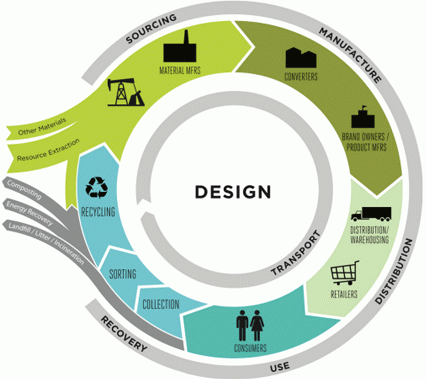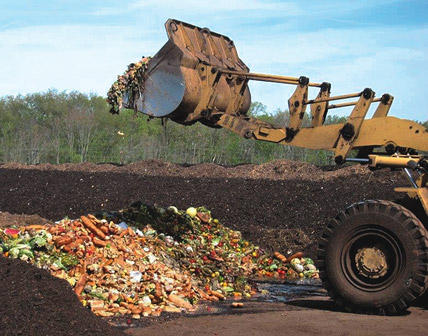|
|
Resource Innovation and Solutions Network
The following material was provided by the Arizona State University Walton Global Solutions Services and the Resource Innovation and Solutions Network.
This is the first in a three-part series about resource management.
Managing waste is becoming an increasingly significant challenge for municipalities around the globe. As landfills fill up and resource
extraction becomes more costly both financially and environmentally, cities and regions are in need of alternative solutions to the
existing waste system. Fortunately, the waste challenge has also opened up new opportunities for innovation, economic development and
creating positive impact through leading-edge resource management strategies. Three concepts that are changing the way societies dispose
their waste and reuse their materials are net positive, zero waste, and the circular economy. Net positive and zero waste describe more
general goals, defined as creating an overall positive impact in society and diverting at least 95% of waste, respectively. The circular
economy is a philosophy that prescribes a new approach to the creation and disposal of products by encouraging a transition from linear
production and waste processes to circular processes, mirroring the condition of nature that there is no waste.
 In this three-part blog series, these concepts are described in more detail and the opportunities for them to be integrated
as complements to each other as a sustainable and economically-sound resource management strategies are discussed. The Global Sustainability
Solutions Services (GS3) of Arizona State University's Julie Ann Wrigley Global Institute of Sustainability are currently at work to advance
the potential of the circular economy in the Phoenix Metropolitan Area. In a collaborative effort, the City of Phoenix and GS3 have developed
the Resource Innovation and Solutions Network (RISN) to transform the Phoenix
Valley's waste stream into a circular system and provide shared value throughout the region.
In this three-part blog series, these concepts are described in more detail and the opportunities for them to be integrated
as complements to each other as a sustainable and economically-sound resource management strategies are discussed. The Global Sustainability
Solutions Services (GS3) of Arizona State University's Julie Ann Wrigley Global Institute of Sustainability are currently at work to advance
the potential of the circular economy in the Phoenix Metropolitan Area. In a collaborative effort, the City of Phoenix and GS3 have developed
the Resource Innovation and Solutions Network (RISN) to transform the Phoenix
Valley's waste stream into a circular system and provide shared value throughout the region.
 Part 1: Introduction to Net Positive, Zero Waste, and Circular Economy
Part 1: Introduction to Net Positive, Zero Waste, and Circular Economy
In the last few years, waste management has become a global conversation. If we, as individuals, companies and public entities, don't change
our waste management practices, there may be as much as 10 million metric tons of garbage being disposed of DAILY in landfills, oceans and
waterways around the globe by 2100. In response, public and private entities are establishing new aggressive goals and initiatives to change
the way we manage waste. Cities and entire regions are in a race to "zero waste," a state in which 95% or more of materials are diverted from
the landfill into some beneficial next use.
Simultaneously, there is a growing movement around the concept of "net positive." A net positive product, service, practice or organization is
one that generates a total positive value for all stakeholders along the dimensions of sustainability that is greater than the negative impacts
required to produce, use or run it. One term being used to communicate this concept is "handprint." The footprint of an organization is the
resources it consumes and other negative impacts resulting from its doing business. The handprint is the economic, social and environmental good
that it produces. An organization is net positive when its handprint is greater than its footprint. Originally articulated in the "cradle-to-cradle"
work of Bill McDonough and Michael Braungart, we must both do less bad (reduce the footprint), while doing more good (increase the handprint).
 Leading cities and regions are beginning to line up in a new race to realize the latest emerging trend: the circular economy. The fundamental
philosophy is that we cannot continue to put trash back into the ground and water and that, moreover, there is no waste in nature and there should
be none in human endeavor. As a result, organizations are redesigning their waste management process, including material, water and air waste, from
linear processes to circular systems. A linear process extracts raw materials, manufactures them into products for use by a consumer and then landfills
them when they have are no longer useful. Circular systems are targeted to be restorative in nature, not degenerative of our resource and social base, as
with linear systems. Circular systems should be net positive by design.
Leading cities and regions are beginning to line up in a new race to realize the latest emerging trend: the circular economy. The fundamental
philosophy is that we cannot continue to put trash back into the ground and water and that, moreover, there is no waste in nature and there should
be none in human endeavor. As a result, organizations are redesigning their waste management process, including material, water and air waste, from
linear processes to circular systems. A linear process extracts raw materials, manufactures them into products for use by a consumer and then landfills
them when they have are no longer useful. Circular systems are targeted to be restorative in nature, not degenerative of our resource and social base, as
with linear systems. Circular systems should be net positive by design.
Creating circular systems requires unique knowledge and presents an alternative perspective to the traditional way waste is managed. Check back for our
next discussion explaining the circular economy in more detail and how it can be used as a complementary approach to generate economic value and transform
our materials systems.
Photo credit: www.biocycle.net/2013/07/18/home-run-for-organics-recycling/
|
|
League of Arizona Cities and Towns
1820 W. Washington St.
Phoenix, AZ 85007
Phone: 602-258-5786
Fax: 602-253-3874
http://www.azleague.org
|
|
|

